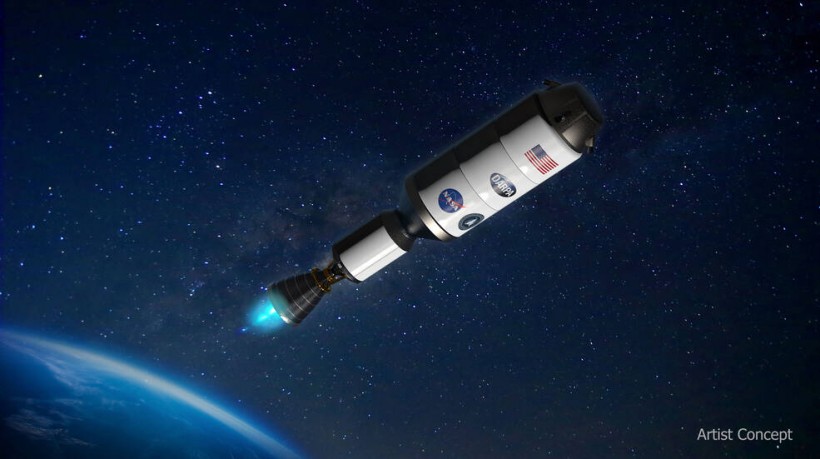The future is nuclear power, and this is the belief of NASA and DARPA's latest development that aims to bring a nuclear-powered rocket to fulfill space missions in the future. The US space agency is investing a whopping $300 million for this ambitious project which aims to be ready by 2027, its target date for the first nuclear propulsion rocket launch.
Currently, space agencies and companies use rockets that relies heavily on traditional combustion which is known for being gas-guzzlers, one of the main reasons that prevent deep-space travel.
NASA, DARPA to Bring $300M for Nuclear-Powered Rocket

(Photo : DARPA)
Artist Concept of DRACO Spacecraft.
NASA and the Defense Advanced Research Projects Agency (DARPA) experts held a teleconference earlier which discussed the plans of the US space agency to bring a nuclear-powered rocket into existence. This is one of the massive focuses of the agencies now, and have allotted as much as $300 million to turn this project into reality.
First off, NASA and DARPA chose Lockheed Martin to head the project, with the contract asking them to design, build, and test the nuclear-powered rocket under the Demonstration Rocket for Agile Cislunar Operations (DRACO) program.
"This demonstration will be a crucial step in meeting our Moon to Mars objectives for crew transportation into deep space," said NASA Deputy Administrator Pam Melroy.
Read Also: Journey to the Moon! NASA Completes First Artemis II Launch Simulation
US Space Agency Hoping to Launch by 2027
Everything is in place for the plans intended for its nuclear-powered rocket and is eyeing its first test to take place by 2027.
NASA and DARPA regarded nuclear propulsion as key for its future explorations, particularly its goals to bring humans to Mars and other deep-space travels that would need a long-lasting fuel source. With this type of rocket, the agency claims that it would be a shorter and faster trip to Mars, as well as other future destinations.
Combustion Rockets of the Present
Most of the rockets of the present are centered on chemical combustion for their propulsion, relying heavily on the different mixes of propellants to give the spacecraft the needed thrust for the mission. The likes of NASA's SLS and Orion rockets are both known for using traditional combustion for their future Artemis missions.
Another commissioned rocket of NASA, SpaceX's Falcon Rocket, is best known for its use of RP-1 which is a rocket-grade kerosene with liquid oxygen as its oxidizer. It has proven to be easier to store and presents a simple handling process, overall cheaper for the company to use, but is also enough to create massive thrust power.
Fuel remains a key part of a spacecraft's needs for its launch and travels, but as the world shifts to alternative energy and further space ventures, traditional combustion is no longer a long-term option. NASA and DARPA's move to go nuclear for its rockets is a step into the future, with the agency already eyeing a launch within this decade.
Related Article: NASA Engineers Test Hybrid Printed Electronics at the Edge of Space









